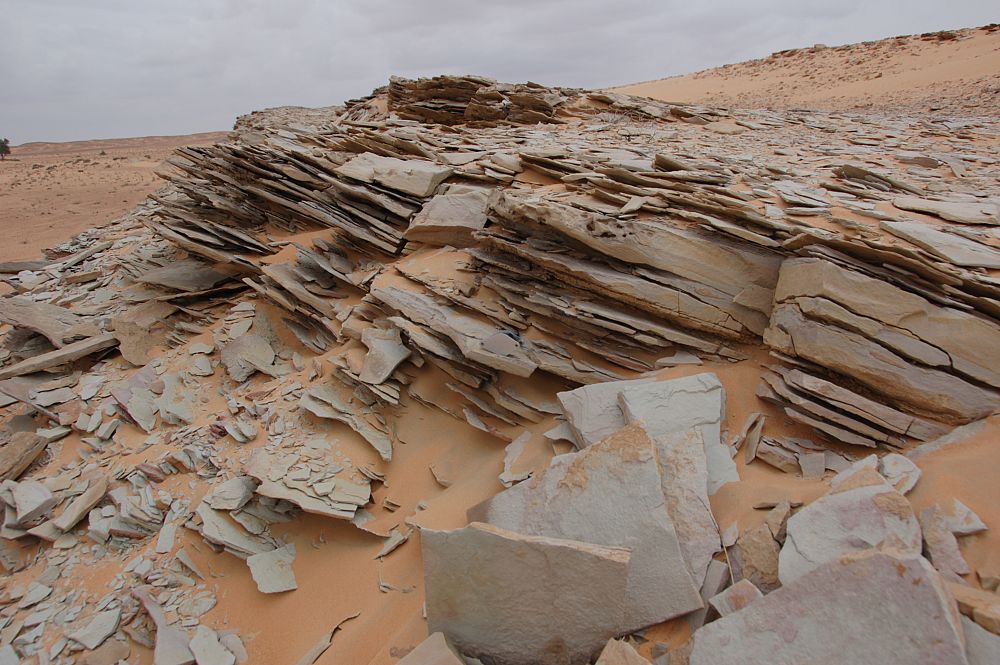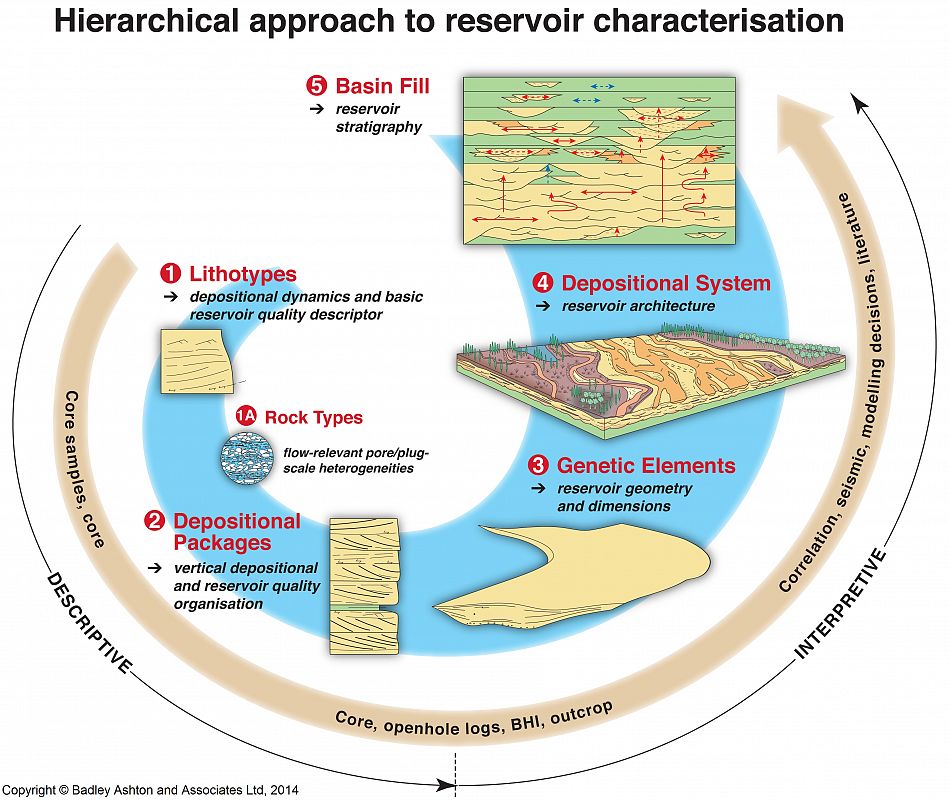Badley Ashton provides precise core observations and validated interpretations via detailed interpretative graphical core descriptions including lithotype analysis, the identification of sedimentological features as well as pore types, cementation, visual estimations of reservoir quality and the recognition of key surfaces, stacking patterns and depositional hierarchy. Generation of user friendly geological well summary panels, integrated diagrams and development of depositional models provides clear explanation and understanding of the sedimentological building blocks required for static modelling. The integration of all sedimentological and petrographic data aids reservoir characterisation and prediction. The core description of clastic reservoirs is undertaken at a detailed 1:50 or 1:20 scale and includes a graphical illustration to reflect the core in terms of its grain size, physical sedimentary structures and other features (eg. high-angle cross bedding, current or wave ripples and mudclasts). Deformation structures (eg. slumping or load structures) and ichnofabrics (including burrow intensity and diversity) are also recorded so as to build up a picture of the depositional processes.
The cored interval is calibrated with the wireline logs and, whenever possible, image data and characterised in terms of its lithological make-up, bed/bedset-scale descriptive depositional packages and their stacking pattern, that are reproducible at a wireline log resolution scale. The lithotype and depositional package schemes will be used to develop interpretative genetic elements that provide basic geometric information with unique sedimentological/lithological properties.
The core and log facies interpretations will be evaluated together with BHI data (if available) to assess the vertical evolution of the study interval and to characterise the depositional model, including an appraisal of palaeotransport direction(s) where appropriate. In multi-well studies interpretations from each well will be cross-referenced against all previous and ongoing studies, including an assessment of lateral facies variations. Any uncertainties and alternative interpretations will be highlighted wherever appropriate.
These data provide the framework within which reservoir quality analysis is undertaken, together with the visually coded core analysis data. The petrographical/reservoir quality data, including any CCA data and/or SCAL data will be coded by the sedimentological descriptors and specific parameters (grain size etc). The integrated sedimentological and petrographical data will then be used to assess the mineralogical/textural composition, the paragenesis and controls on reservoir quality within and between the different descriptors and reservoir layers, and importantly, between wells.


Following a full integration of all sedimentological, structural, petrographical and reservoir quality data, interpretation of the reservoir architecture can be undertaken. This may be purely based on core data, calibrated against wireline logs, or may include well test/production data (eg. MDT/PLT) and SCAL data (depending on the technical focus).
The aim will be to highlight potential sandbody geometries/scales, flow units, baffles/barriers and internal heterogeneities, with integrated petrographical analyses highlighting the controls on net reservoir (eg. within coarse- grained or weakly cemented intervals). The possible development of baffles or barriers within the study interval and/or any heavily cemented units (from the the lithotype to the reservoir layer-scale) will also be assessed. Appraisal of the reservoir architecture may also assess the timing of hydrocarbon charge and diagenesis (through fluid inclusion analyses), bitumen distribution and also any resultant implications for reservoir development, including possible formation damage issues (eg. fines migration or the presence of swelling clays).
